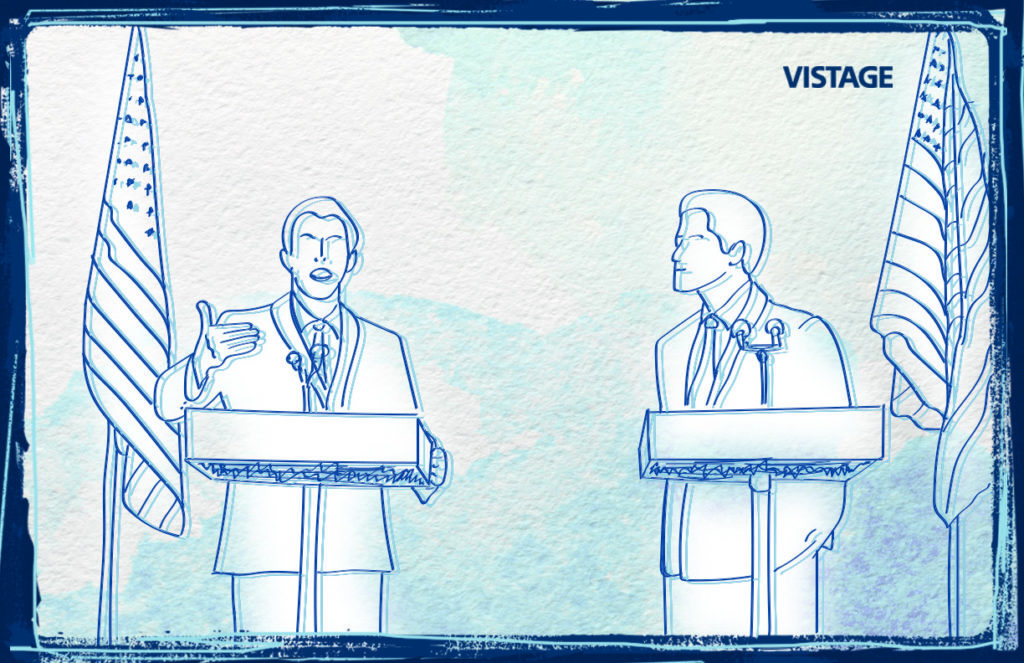Constructive Disagreements – Finding a Third Tangible

 Why do arguments go astray? Why don’t politicians stick to the issues? Why does conflict inevitably degenerate into name-calling and accusations? Why do we often leave an encounter over a disagreement feeling that we haven’t made our point or that the other party didn’t listen?
Why do arguments go astray? Why don’t politicians stick to the issues? Why does conflict inevitably degenerate into name-calling and accusations? Why do we often leave an encounter over a disagreement feeling that we haven’t made our point or that the other party didn’t listen?
It’s because people in conflict situations often feel uncomfortable and defensive and their only recourse is to attack the other person rather than the issue. It may well be a fair conclusion to assume that two people simply cannot argue about their differing views without arguing instead about their personal differences. Unless they create something else to discuss.
There are two tangibles to every disagreement. If you’re involved, one of them is you and the other is the other person. That’s not enough. For an argument to be constructive, there must be a third tangible to argue about, something to which both parties can direct their energy, their comments and, if necessary, their anger or frustration.
Suppose you’re having an argument with a difficult customer. She feels you haven’t lived up to your side of the bargain. You’re talking on the phone in anticipation of meeting together tomorrow. In the middle of a heated conversation you suggest that she bring along with her a list of the three key parts of the contract she thinks you didn’t fulfill. The next day she arrives with her list. You’re ready with the contract and the dates you performed the service. You meet in a conference room with both of you side-by-side looking at her points along with what you’ve prepared. You now argue about what’s in front of you rather than about each other. You’ve brought a third tangible into the picture.
You have an employee whose attitude is surly, though he gets his work out accurately and on time. You don’t know how to tackle the attitude problem but you do know it’s affecting others in the department. You ask him to stop in tomorrow and bring a list of the five attributes that are most important to his job being performed well. You tell him that you’ll also list five. Then when you get together you talk about the differences between the two lists. It’s a lot more constructive than the judgmental discussion that could otherwise take place.
Here are some rules for creating third tangibles and making them work for you:
- Try to get input from both parties. If possible, allow the other person to make a contribution by bringing in the damaged merchandise, the contract, or, as in the above examples, a list of their opinions or complaints.
- Keep it simple. Don’t allow extraneous details to clog communications. If only one clause of the contract is in question, don’t duplicate all eight pages.
- The bigger the better. Enlarge anything that’s in fine print. Use a flip chart on which major points are written in large, readable letters. Layout the item on a table or tape it to the wall.
- Keep the discussion focused away from each other. Stand side-by-side if possible, directing physical attention toward the third tangible and using eye-to-eye contact for reinforcement of understanding.
The final word: objectivity in conflict management is an elusive commodity. The chances of achieving it are considerably enhanced by finding something else – a third tangible – which will shed light on the conflict. The immediate result will be to visibly demonstrate to both parties what it is that they are in fact arguing about. That, in itself, is a constructive achievement.
****
About the Author: John A. Page, LFHIMSS
John is an accomplished executive with impressive senior-level strategic management experience and success recognized industry-wide for contributions to healthcare information technology and management systems. Nationally respected on topics of social media, technology and strategic business alignment, he serves as a Vistage Chair and Host of CEOIntroNet TV Chicagoland as well as an advisor to Boards and business leaders.
Category: Communication & Alignment
Tags: Conflict, Conflict Management

